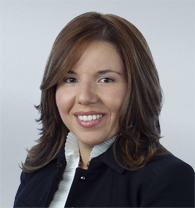
It’s hard to believe that H-1B season is around the corner! United States Citizenship & Immigration Services (“USCIS”) will start accepting new H-1B petitions for fiscal year 2019 on Monday, April 2, 2018. As such, employers should start immediately identifying current and future employees who will require sponsorship for new H-1B petitions.
By way of background, USCIS issues H-1B visas to foreign workers serving in “specialty occupations at a professional level.” A specialty occupation requires theoretical and practical application of a body of highly specialized knowledge, to be performed by a worker with at least the equivalent of bachelor’s degree in the field. Both the position to be filled and the foreign worker’s qualifications must meet the criteria for a specialty occupation.
The statute provides for an annual quota of 65,000 new H-1B visas that can be issued in any given fiscal year, which runs from October 1 to September 30. In addition, there is a separate quota of 20,000 H-1B visas per fiscal year for graduates of U.S. advanced degree programs, for a total of 85,000 H-1B visas. Because the annual quota was met within days of the first day of filing (April 1, six months before the start of the fiscal year) on a consistent basis the last few years, all petitions are placed into a random computer lottery system. Only those petitions selected in the lottery will be deemed receipted (with a receipt notice being issued by USCIS) and proceed to adjudication.
Despite the current administration’s attacks on the H-1B visa, business immigration practitioners expect that this year’s H-1B demand will be the equivalent with more than half of all H-1B petitions filed by employers rejected due to the haphazard lottery system. Affected foreign nationals whose petitions are not chosen will be unable to obtain an H-1B visa until the next fiscal year and may be required to forgo employment with employers and possibly leave the United States. In such instances, employers will need to look at alternative visas for affected employees.
Thus, in this climate, our firm strongly urges employers to file H-1B cap-subject petitions with USCIS on the earliest possible date in fiscal year 2019. Ideally, this would mean mailing the petition to USCIS on March 31, 2018 for delivery to USCIS on Monday, April 2, 2018, the very first day of filing. In order to do this, employers with potential H-1B cap subject petitions should review their workforce needs, determine whether they will need to sponsor any potential foreign nationals, and initiate cases immediately.
Obtaining an H-1B visa for an employee requires significant advance planning. It can take sometimes two to four weeks to gather all of the necessary information and supporting documentation, file the Labor Condition Application, and prepare the petition for filing with USCIS. Additionally, ever since USCIS started implementing President Trump’s “Buy American and Hire American” Executive Order, employers should be prepared to see more requests for evidence focusing on the appropriateness of a specific salary, questioning an employee’s qualifications, and whether a position qualifies as a specialty occupation.
In sum, with H-1B season almost upon us, employers should not hesitate or wait to contact immigration counsel to begin working on cap subject petitions. Our firm is available to assist with your H-1B needs.
For more information, please contact Maria del Carmen Ramos at 813.227.2252 or mramos@slk-law.com.
